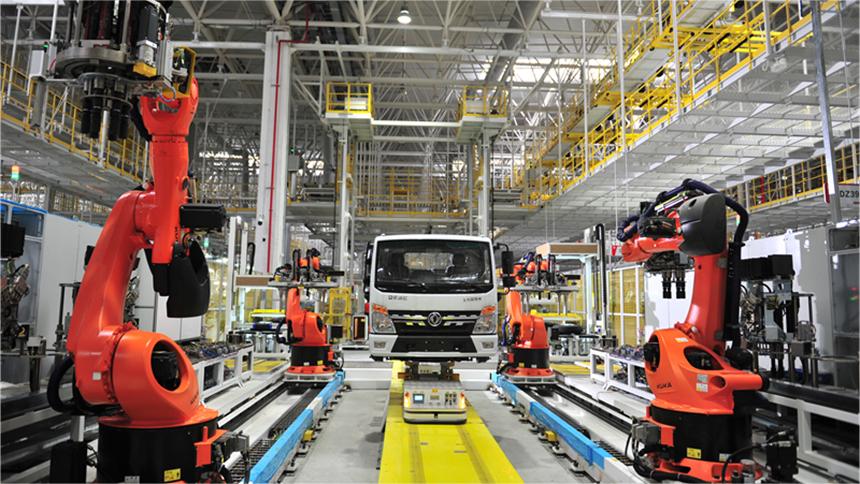Virtual power system brings tangible benefits to NW China
YINCHUAN, June 18 (Xinhua) -- Despite the lunch break, several furnaces and ancillary facilities continue to rumble at Jujin Chemical Co., Ltd., in Zhongwei City, northwest China's Ningxia Hui Autonomous Region. The production of calcium carbide fills the workshop with hot air and a dazzling glare.
"We have flexibly adjusted our production timing since September 2023 to increase production when the power grid is less occupied," said Yu Shengyuan, deputy general manager of the company. "Each kilowatt-hour of electricity generated by new energy, if consumed in this way, can help our company receive a direct subsidy of 0.19 yuan (about 2.7 U.S. cents), which not only ensures production but has also earned us an additional 400,000 yuan so far."
This approach, known as the "virtual power plant," allows users to participate in daily power grid regulation and make sure the electricity generated by new energy will not be a waste.
Ningxia has abundant wind and solar resources, with green power capacity exceeding 36 million kilowatts by the end of 2023. New energy has surpassed coal to become the region's largest electricity source.
"However, there is a mismatch in time and space between the generation and consumption of green energy in Ningxia, making it difficult to achieve a real-time balance of power supply and demand," Wang added.
"A virtual power plant is invisible. It acts as an intelligent energy regulation system, bringing together various electricity users, distributed power sources, and energy storage providers," said Wang Fang, technical director of the region's virtual power plants. "It lets users voluntarily change their electricity consumption behavior through market incentives."
The virtual power plant has emerged as a supplementary and effective regulation mode. When there is a surplus of power supply, it can guide users to increase electricity consumption to use more green energy. During peak hours, it can reduce electricity load to secure the power grid.
"Participating in such a virtual power plant can help obtain bonuses and turn to more green energy, which is a win-win outcome both economically and ecologically," Yu explained.
Ningxia's virtual power plant control platform was officially launched in September last year. It displays real-time monitoring of resource access, electricity load, and power trading data of all virtual power plants in Ningxia.
"We release information about whether our electricity supply will be insufficient or in surplus one day in advance based on energy generation and electricity load so that every virtual power plant can contact its subordinate enterprises to better report their regulating capacity of electricity," Wang said.
With the rapid development of China's new energy infrastructure, the proportion of installed capacity from renewable sources is steadily increasing. However, the intermittent and fluctuating nature of new energy also poses challenges in regulating the electrical grid system, Wang said.
By guiding electricity users, the virtual power plant ensures the stability of the power grid and plays an important role in reducing energy waste and facilitating the transition to green energy, aligning with China's commitment to peak carbon dioxide emissions by 2030 and achieve carbon neutrality by 2060.
An increasing number of people are getting involved in virtual power plants. For example, in the case of new energy vehicles, many owners tend to charge their cars at night, which could cause instantaneous electricity overload in the community. Virtual power plants offer discounts to owners who charge at different times or use lower voltage with longer charging time, thus, balancing power supply and demand, according to Wang.
Ningxia is just one region taking the initiative to explore virtual power plants in China. Currently, the virtual power plant control platform manages five virtual power plants, involving 14 types of industries. Their adjustable electricity load is equivalent to three 600-megawatt thermal power units, saving an investment of about 9 billion yuan and reducing carbon dioxide emissions by about 8.3 million tonnes.
During the summer peak hours this year, the total regulation capacity of Ningxia's virtual power plants is expected to exceed 2.2 million kilowatts, and their total green energy consumption is estimated to increase by 100 million kilowatt-hours in 2024, according to Wang.
Photos
Related Stories
- China's power generation up 2.3 pct in May
- China's installed capacity of power batteries sees growth in first 5 months
- China's installed power generation capacity up 14.1 pct
- China's power generation up 3.1 pct in April
- China's power generation up 2.8 pct in March
- China's power use up 7.4 pct in March
- China's power generation up 8.3 pct in January-February
- China's power use up 11 pct in Jan-Feb
- How to get a shared powerbank in Shanghai
- China's lithium-ion battery output up 25 pct in 2023
Copyright © 2024 People's Daily Online. All Rights Reserved.









